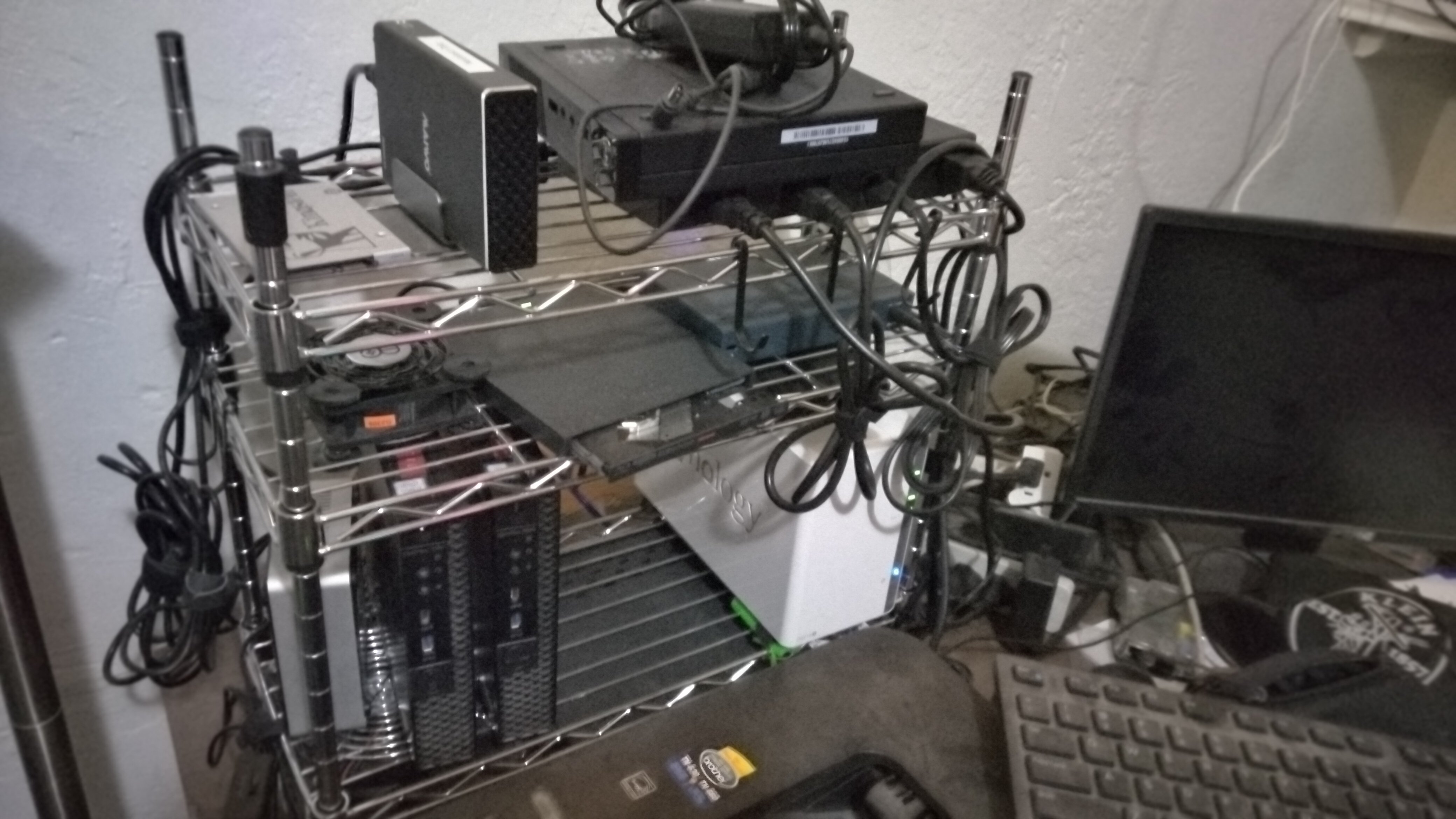

This one gave me the confidence to post my setup, I salute your bravery (°_°)7.
The best of luck with your future insurance claim.


This one gave me the confidence to post my setup, I salute your bravery (°_°)7.
The best of luck with your future insurance claim.


Uggo = uptime





I would think that the power led would be on if there’s power going through the motherboard.
Are you referring to the power led or the disk usage led? I think on my nuc the only other led is the disk usage one, which looks like a soda can. The power led is always on, but doesn’t indicate standby or operating as far as I’ve seen.


It’s likely there’s another boot device that’s taking priority over USB, if USB is even enabled in the bios. I’ve had a few computers that try to pxe boot after internal drives, so it never went to usb until I futzed with the boot order to remove pxe. It’s likely not that you didn’t have an SSD in it, but that USB drives aren’t high enough on the boot list, or not at all. You could try finding what the boot selection key press is on boot, then blindly picking first, second, third option etc. to see if anything gets a hit (frantically press boot key during start up then hit enter after a few seconds, then reset and do it again if nothing happens after about 30 seconds, but hit down, then enter.)


I don’t keep a Swiss army knife set of distros anymore. I put tumbleweed on a USB. It’s rolling so I update it when I plug it in, then do what I need to do.
I used to have a USB with Ubuntu LTS and whatever the newest Ubuntu was. Then another would get something else that I needed/wanted. I always ended up wiping the drive and adding the newest release every single time. I was always out of date by the time I needed one of them for boot repair or something. This was also a time when persistence… Wasn’t very persistent. With tumbleweed I can install whatever I need and it’s there next time. I’m sure you can do the same with any other rolling release, but tumbleweed is in my opinion on par stability-wise with incremental distros. It’s my first grab whenever I need to check a PC. If I need another distro or boot USB, I can make it from this one with a second USB. I suppose the only thing I can’t do is make a bootable USB if the computer I’m on can’t access the Internet


You don’t need to pop it out to DD the SD card, you can do it while it’s running. I like to pipe DD through gzip to get a compressed image as the output so I’m not sitting on 16gb file for 3gb worth of files.


I hate to admit that I love using these micro business computers, but they’re pretty awesome. Stackable, powerful, upgradeable, cheap second hand or refurbished. I’ve considered nucs, but you can find buckets of these for cheaper.


Not op, but a nuc idles around 5 watts, and at load can use up to 100 watts depending on specs. A raspberry pi4 idles somewhere around 3.5 watts and at load is still under 10 watts.


I second the Synology, I currently have a 2 drive version setup as raid 1 with 3TB drives. It was super easy to set up, and I haven’t touched it in about 5 years now. Set everything up how I wanted and it’s worked flawlessly ever since. Granted, I set it up for myself, not for anyone with an aversion to technology. I much prefer to have a large amount of my data under my own control, plus I get to keep full resolution photos, videos, etc. without worrying about running out of space.
Plus transferring data over a home network is so much faster than through an ISP (at least with what’s available to me).
As mentioned many times I’m sure, I use my rpi’s as a pi-hole/VPN. It’s nice having them as dedicated devices for low power things, if my main server ever fudges up, my VPN still works and internal DNS is still resolved. If I’m not home and get complaints from the family that jellyfin isn’t working, I can either fix it remotely or wake up my dev server for them to use in the meantime.
I also have an rpi 1 as a “dedicated ssh machine” that I can ssh into in case all of my other machines have gone goofy. If for any reason my two main devices aren’t accessible, that one will be because if there’s power to the house it will turn on. It does literally nothing else, so there’s very little chance a power outage will corrupt anything. It does require that the pivpn device is working if I’m not home, but I prefer to leave that to it’s own …devices.